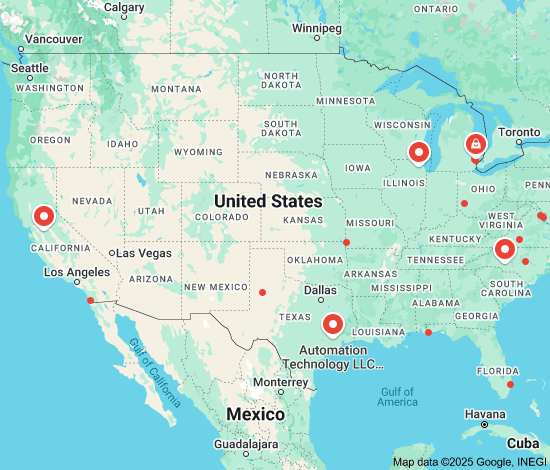
Building Financial Security: The Power of Personal Savings
Personal Savings: Building a Solid Financial Foundation
In today’s fast-paced and unpredictable world, personal savings play a crucial role in securing our financial well-being. Whether it’s for emergencies, future goals, or retirement, having a robust savings plan is essential for achieving financial stability and peace of mind. In this article, we will explore the importance of personal savings and provide some practical tips to help you build a solid financial foundation.
Why are personal savings important?
Emergency Fund: Life is full of unexpected events that can take a toll on our finances. From medical emergencies to sudden job loss, having an emergency fund can provide a safety net during challenging times. Experts recommend setting aside at least three to six months’ worth of living expenses in an easily accessible account.
Financial Independence: Personal savings empower you to take control of your financial future. It allows you to handle unforeseen expenses without relying on credit cards or loans, thereby reducing the burden of debt. Building savings also provides a sense of freedom and flexibility in making important life decisions.
Achieving Goals: Whether it’s buying a home, starting a business, or pursuing higher education, personal savings are instrumental in turning dreams into reality. By regularly setting aside money towards specific goals, you can make progress towards achieving them and avoid unnecessary debt.
Tips for building personal savings:
Budgeting: Start by evaluating your income and expenses to create a realistic budget that includes saving goals. Track your spending habits and identify areas where you can cut back or make adjustments. Remember, every dollar saved counts!
Automate Savings: Make saving effortless by setting up automatic transfers from your paycheck or checking account into a dedicated savings account. This ensures consistent contributions without the temptation to spend the money elsewhere.
Reduce Debt: High-interest debts can drain your finances and hinder your ability to save effectively. Prioritize paying off debts such as credit cards or loans with the highest interest rates. Once you’re debt-free, redirect those payments towards savings.
Cut Expenses: Look for ways to trim unnecessary expenses from your budget. Consider negotiating bills, switching to more cost-effective alternatives, or adopting frugal habits that align with your values.
Set Realistic Goals: Break down your savings goals into achievable milestones. Start with smaller targets and gradually increase them over time. Celebrate each milestone reached to stay motivated and committed to the saving journey.
Explore Investment Options: As your savings grow, consider exploring investment opportunities that align with your risk tolerance and financial goals. Consult with a financial advisor to make informed decisions based on your circumstances.
Remember, building personal savings is a long-term commitment that requires discipline and patience. It’s not about depriving yourself of enjoyment or living a frugal life; rather, it’s about making conscious choices that prioritize your financial well-being and future security.
In conclusion, personal savings are an essential component of a solid financial foundation. By having an emergency fund, achieving financial independence, and working towards specific goals, you can experience greater peace of mind and achieve long-term financial success. Start today by implementing these tips and watch your savings grow over time – you’ll thank yourself in the future!
Frequently Asked Questions About Personal Savings: Guidelines, Definitions, Rates, and Banks
- How much money should a person have in savings?
- What is personal saving?
- What is the personal savings rate in 2023?
- Which bank gives 6% interest in savings account?
How much money should a person have in savings?
The amount of money a person should have in savings can vary depending on individual circumstances and financial goals. While there is no one-size-fits-all answer, financial experts generally recommend having an emergency fund that covers three to six months’ worth of living expenses.
This guideline provides a safety net to handle unexpected events such as medical emergencies, job loss, or major home repairs. Having three to six months’ worth of expenses set aside can help you navigate through difficult times without resorting to credit cards or loans.
However, it’s important to note that everyone’s situation is unique. Factors like income stability, job security, family size, and personal risk tolerance should be considered when determining the appropriate amount for your savings. Some individuals may feel more comfortable with a larger emergency fund, while others may be able to manage with a smaller one.
Additionally, beyond the emergency fund, it’s advisable to save for specific goals such as buying a house, starting a business, or retirement. The amount needed for these goals will depend on various factors like the timeline and cost associated with each objective.
To determine the ideal amount for your savings, it is recommended to assess your monthly expenses and consider your personal circumstances. Evaluate factors such as income stability, job security, debt obligations, and future financial goals. Consulting with a financial advisor can provide valuable insights tailored to your specific situation.
Remember that building savings is an ongoing process. Start by setting achievable milestones and gradually work towards increasing your savings over time. The key is consistency and making saving a habit that aligns with your financial aspirations and long-term security.
What is personal saving?
Personal saving refers to the act of setting aside a portion of one’s income or resources for future use. It involves intentionally saving money or assets rather than spending them immediately. Personal saving can take various forms, such as depositing money into a savings account, investing in retirement accounts, purchasing assets like real estate or stocks, or simply keeping cash reserves.
The purpose of personal saving is to build financial security and stability over time. It allows individuals to have funds available for emergencies, unexpected expenses, and future goals. Personal savings serve as a safety net during challenging times and provide a sense of financial independence and freedom.
Saving is not just about accumulating wealth; it also involves developing healthy financial habits and making conscious choices about spending and prioritizing long-term goals. By consistently setting aside money for personal saving, individuals can achieve greater financial resilience, achieve their desired milestones (such as buying a home or starting a business), and prepare for retirement.
It’s important to note that personal saving is different from investing. While saving typically involves low-risk methods like keeping money in a savings account, investing involves putting money into assets that have the potential to generate returns but also carry higher risk. Both saving and investing are essential components of building a solid financial foundation.
In summary, personal saving refers to the practice of setting aside income or resources for future use. It enables individuals to build financial security, achieve goals, and be prepared for unexpected expenses. By cultivating good saving habits, individuals can establish a strong foundation for their financial well-being.
What is the personal savings rate in 2023?
It is impossible to answer this question since the personal savings rate in 2023 is not yet known.
Which bank gives 6% interest in savings account?
While I strive to provide up-to-date information, interest rates offered by banks can vary and change over time. It is always recommended to directly contact banks or visit their websites for the most accurate and current information regarding interest rates on savings accounts.
That being said, it is important to note that a 6% interest rate on a savings account is relatively high in today’s market. Interest rates are generally influenced by various factors such as economic conditions, market trends, and bank policies.
Some banks may offer promotional or introductory rates for a limited period of time, but it is uncommon to find a savings account with a sustained 6% interest rate. Banks typically offer lower interest rates on savings accounts compared to other investment options due to their focus on stability and liquidity.
To find the best savings account options available with competitive interest rates, it’s advisable to research different banks and financial institutions in your area. Compare their offerings, terms, fees, and customer reviews before making a decision that aligns with your financial goals and needs.

